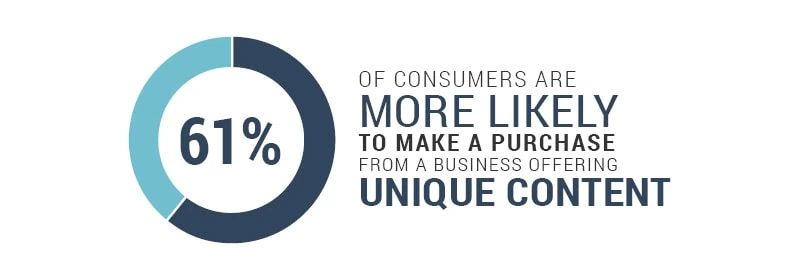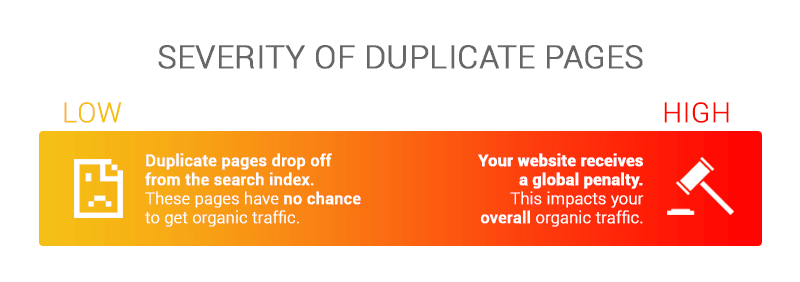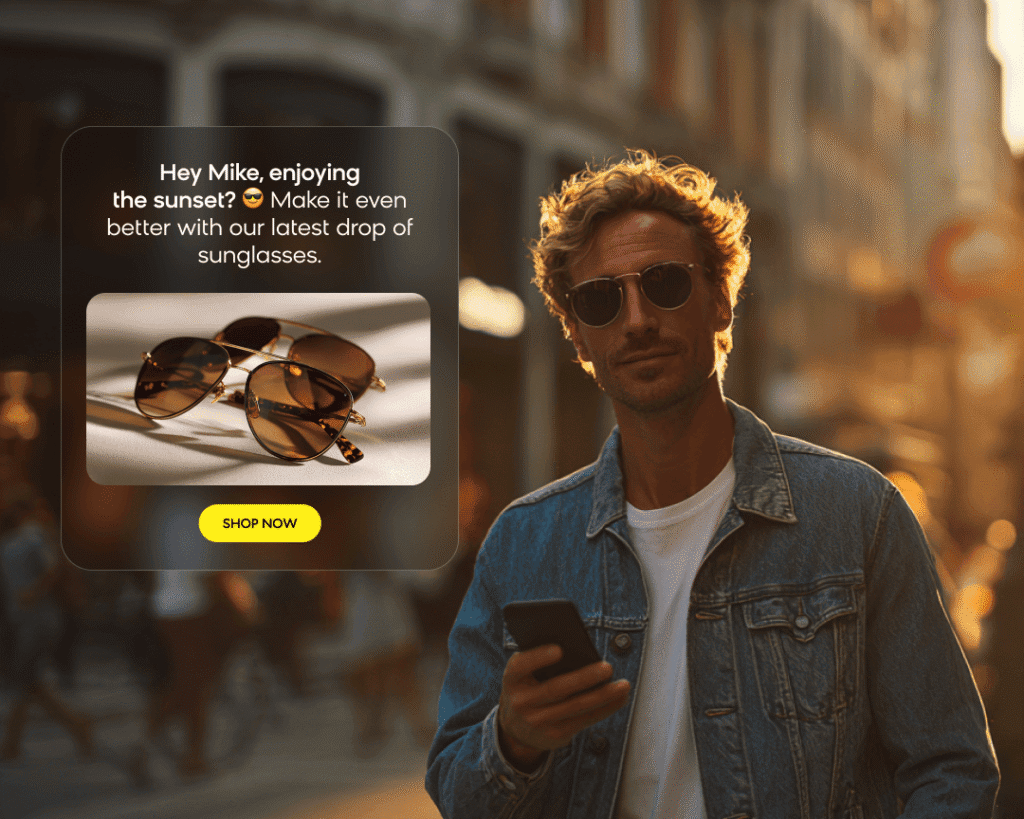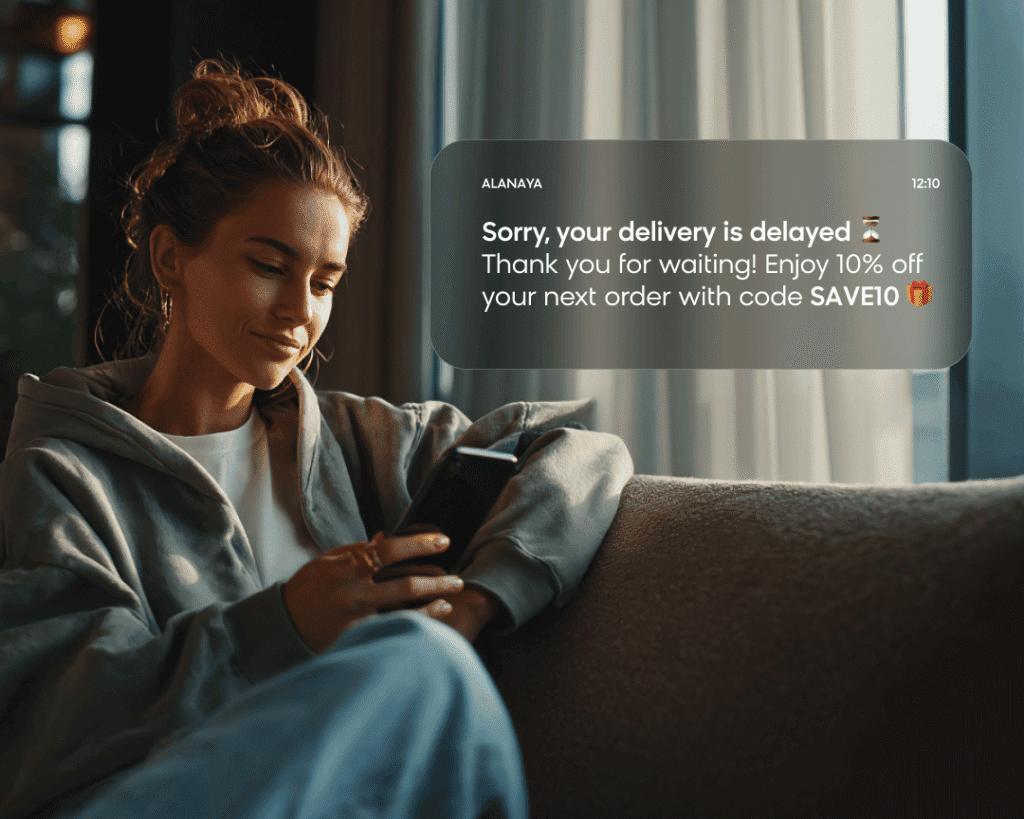What Is “Unique Content?”
It’s a term that’s used everywhere these days – ‘unique content’. In fact, it crops up so often that its meaning has been lost a little.
So, what exactly is unique content and why has it become such a buzzword?
Unique content is content that exists exclusively on your site and adds distinct value for your customers. This content helps distinguish your site from others by providing additional information that other sites don’t have.
Basically, unique content distinguishes your site by providing additional information that others don’t have.
It could even be defined as your organization’s view of the world. You may be talking about a well discussed topic, but in your own way and with your own voice.
Why Does Unique Content Matter?
Unique content is important both for customers and search engines. Before we get into Google bots and the like, let’s start with customers.
In general, unique content should guide customers to great experiences. When it does so, it leaves a lasting impression, one that can boost sales and customer loyalty.
- Enriched Customer Experiences
Put yourself in your customer’s shoes: when you’re shopping for something specific, you want to find it quickly and easily.

Too often, customers are left frustrated when searching.
Take the example of a search for “boho chic earrings”. Browsing a website’s categories leads to an accessories page filled with dozens of unrelated products.
What should be a fast, simple search is now an abandoned one.
A retailer could turn that whole scenario around by creating a “boho chic” landing page with descriptive content, images, and other elements.
Customers get to explore the boho chic style and in their mind that website becomes their go-to place for information on it.
This page can be made informative, interesting, fun and personal. It can even allow users to build or customize their own product. Many online retailers have already jumped into that space, like spectacle shop, Polette.
Belroy’s “Slim your Wallet” page is a great example of such an attention-grabbing, customer focussed page.
The next time the customer wants to purchase something in that genre, the site with that great experience will be top of mind. They may even share their find on social media.
- More Customer Focus
AI algorithms can quickly analyze data about customers, turning masses of Big Data into rich customer insights that can be used to meet their needs.
When these insights are incorporated into decision-making the sky’s the limit. Information on customer preferences, browsing behaviour and more can be used to meet (even predict) their needs.
Companies can make product suggestions and target marketing efforts much more effectively.
Even the way companies talk to consumers is changing. Advances in Natural Language Generation (NLG) mean AI is even increasing its capacity to churn out original content.
Aside from supporting data-driven decisions, technology can eventually create content that not only fits the context, it even starts to sound human.
Unique Content Supports SEO
Search engines also care about unique content. They want to make sure that as customers make queries, the search results they are shown are (at a minimum):
- Relevant to the query.
- Unique vs. the other results.
- Going to lead customers to high-quality content.
- Shown as quickly as possible.
Search engines like unique content because it helps differentiate sites with similar content from one another.
This allows search engines to demonstrate their value by offering diverse, high-quality results almost instantly.
The opposite of unique content is duplicate content where searchers get a lot of the same information from different sites. The general belief is that duplicate content is penalized on search engines. The debate on whether that’s true continues.
One thing is certain. Search engines definitely want to avoid having people sift through lots of different websites to find what they want.
With that in mind, unique content is essential to stay on the right side of that issue.
How to Create Unique Content for Your Website
Now that we’ve established why unique content matters to customers and search engines, let’s discuss tips on how to make sure your content is as unique as possible.
- Avoid Repeating Yourself
Selecting the right topic is a crucial first step. Take a look at your website’s existing headers and titles (get a list of them if you can). Compare them to the topics you are considering.
Next, look at the body of the content (what’s written on each page). Is there much overlap? You can use this information to avoid rehashing the same content.
In cases where there is a lot of content overlap, you could even consider removing duplicate text/pages.
- Survey the Competition
Think about your top 5-10 competitors. What results do search engines show for them?
Compare that to your high-level topics to determine how you can differentiate.
See how they are writing; how long are articles, how in-depth? There could be some useful guidance for the approach you take.
You may even find there is similar content. If so, you can avoid certain topics, or choose to write about them from a completely different angle.
- Be Creative
If you want to engage people, your website content has to get a lot more fancy than product descriptions. This is not just about providing information.
Going back to the boho chic example, your website could suggest other products from your inventory that match that style.
This captures a shopper’s imagination, whilst creating an opportunity to upsell.
There’s also more to content than words, and that’s an area that’s growing rapidly.
Unique videos, images, and customer reviews also help you to stand out from competitors, both for users and search engines.
- Review Your Website
Once you’ve ensured the content on your site is unique, continue to make sure that the product mix, particularly above the fold, remains different between new and existing pages on your site.
Here are a few tips on what to do if your new and existing pages look similar:
-
Consider implementing rel canonicals in order to collapse similar pages so search engines don’t perceive them to be the same.
-
For pages with pagination, include rel next and rel previous to indicate to search engines that these pages are tied to one another.
-
You may want to consider adding a noindex/nofollow tag after a certain number of facets to avoid over-indexing your site, thus wasting valuable search engine crawl budget. (More on this in the next post!)
-
If you want to remove duplicate content from your site but preserve the link authority that already exists in a search engine’s index, use 301s to redirect customers and search engines to the desired landing page.
-
Use tools like Google Webmaster to see which keywords appear most frequently on your site, what other sites are linking to it, and your own internal in-linking structure.
Summary
As your site continues to develop, it’s important to be proactive about keeping your content unique.
It will not only enhance the customer experience, it will differentiate your site from others as you fight for the attention of search engine indexes.
Keep content fresh by implementing checks like the ones listed above. This will help to ensure you continue to have new, interesting content.
Content is more than simply providing information, it’s how you talk to people, how you show what your business is about.
In today’s online world, uniqueness is key, so be innovative, review and fine-tune constantly to set yourself apart. This not only meets the needs of search engines, it means you actually communicate better.
Today’s customers are used to smart, relevant, unique content – especially millennials. If you want to connect with people and stand out from the crowd you need to make it worth their while to listen.
This is especially so in the world of online retailing. It’s become a crowded and noisy space, where it’s tough to be found and even tougher to be remembered.
For any business entering into that particular foray, unique content is an essential tool. It’s the key to being heard out there. It could even be the difference between success and failure.














